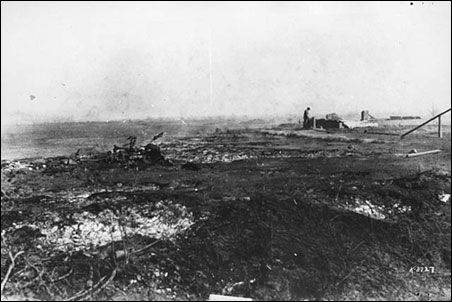Famous Minnesota fires: A look back in photos
Famous Minnesota fires: A look back in photos
22 September 2011
published by www.minnpost.com
USA — Forest fires can be confounding and frightening things. In a state like Minnesota, they are part of our lore.
The Hinckley fire of 1894, which burned the town and 350,000 acres around it and killed more than 400 people (we’ll never know the true tally because American Indian deaths were not counted), has its own museum. The Ham Lake fire of 2007 was a different kind of tragedy. The man indicted on charges of igniting the 76,000 acre wild fire a retired federal employee who visited the BWCA frequently from his home in Washington committed suicide in 2008, just two months after the indictment was made public. Now we have the Pagami Creek fire; the worst Minnesota forest fire in more than a century.
Tomorrow we’ll examine the unique ecology of forest fires, why we let them burn, and if we should at all. Today we look back. (For a more nuanced look at the history of fires in the BWCA, there is a comprehensive look at fire activity both intentional, accidental, and sparked by lightening at the fantastic BWCAWiki site.)
Here is a brief history of famous fires in Minnesota, as told by the Department of Natural Resources in their primer, “All about Minnesota’s Forests and Trees”. To make these fires a bit more real to us today, I dug around the Minnesota Historical Society archives to find photos.

Courtesy of the Minnesota Historical Society
View of Hinckley main street the morning after the fire.
Hinckley Fire, 1894
“Sparks from burning stumps igniting a 28-million-board-foot pile of lumber at the Brennan Lumber Company.”
Acres burned: 350,000
Deaths: 418 (may be higher since American Indians were not counted)

Courtesy of the Minnesota Historical Society
Ruins of Chisholm after fire.
Chisholm Fire, 1908
“Windy conditions brought sparks into piles of slash (woody debris left over after logging) within village limits.”
Acres burned: 20,000
Deaths: 0

Courtesy of the Minnesota Historical Society
Burying victims of the Baudette-Spooner fire.
Baudette-Spooner Fire, 1910
“Windy conditions fanned several small fires into a large one that consumed the towns of Baudette and Spooner. The death toll would have been much higher, had not trains been available to whisk to Canada hundreds more just ahead of rampaging fires.”
Acres burned: One million
Deaths: 40

Courtesy of the Minnesota Historical Society
Scene outside Moose Lake after the fire.
Cloquet-Moose Lake Fire, 1918
“Six distinct fires burned together, fanned by wind; 5,200 people injured or displaced; 38 communities destroyed.”
Acres burned:1.2 million
Deaths: 453

Courtesy of the Minnesota Historical Society
Forest fire at Red Lake Game Refuge.
Dust Bowl Fires, 1931
“There were several, but the largest was the Red Lake Fire, which ran from Red Lake to the Canadian border.”
Acres burned:993,000
Deaths: 4
Huntersville Fire, 1976
“A spark from a farmer’s haymaking machine ignited dry grasses.”
Acres burned:23,000
Deaths: 0
Carlos Edge Fire, 2000
“Caused by escaping sparks from a home debris pile.”
Acres burned:8,500
Deaths: 0
Ham Lake Fire, 2007
“A campfire-started blaze consumes some of the forest affected by the wind- storm of July 4, 1999, in the Boundary Waters Canoe Area Wilderness. A little more than half of the acres burned were in Canada.”
Acres burned:75,851 (36,443 in Minnesota; 39,408 in Canada)
Deaths:0

